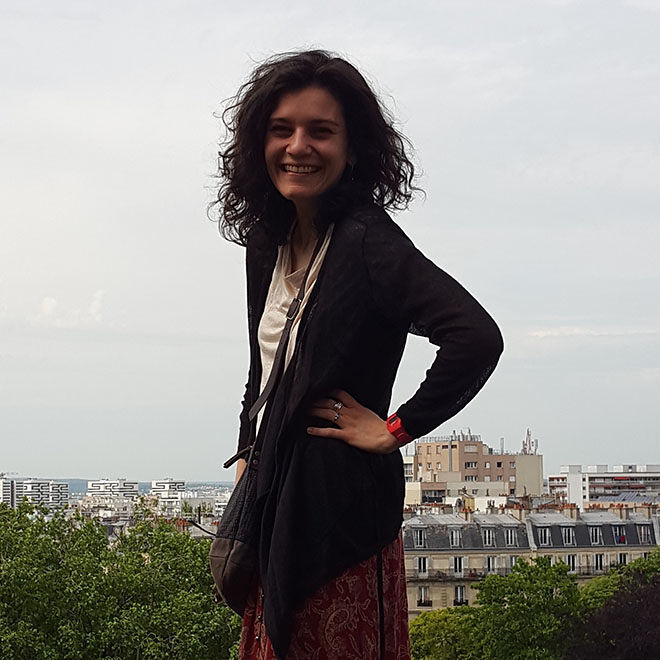
Darienne Turner (MA 2017), currently serves as the assistant curator of Indigenous Arts of the Americas at the Baltimore Museum of Art.
1. Where has life after Bard Graduate Center taken you?
As the assistant curator of Indigenous Arts of the Americas at the Baltimore Museum of Art, an enrolled member of the Yurok Tribe of California, and a faculty member in Maryland institute College of Art’s graphic design department, my work engages critically with the history of Indigeneity in the Americas and beyond. I earned a BA in comparative literature from Stanford University in 2011, and an MA in decorative arts, design history, and material culture from Bard Graduate Center (BGC) in 2017. I am the curator of Stripes and Stars: Reclaiming Lakota Independence (2020), and I have contributed to exhibitions at BGC, Walters Art Museum, Utah Museum of Fine Arts, and Yellowstone National Park. My essay “Terrestrial Gateways to the Divine” (co-written with BGC alum Alexandra Beuscher) was featured in the Agents of Faith: Votive Objects in Time and Place exhibition catalogue, which was named one of the Best Art Books of 2018 by the New York Times.
2. What attracted you to BGC’s program?
I was interested in studying material culture and really wanted to attend a two-year MA program. BGC felt like the perfect fit, because it has incredible faculty, and I loved the idea of being right next door to top museums in the United States. I spent so many hours meeting with museum curators and professionals, which was an experience that simply wouldn’t have been possible at other schools. It was particularly thrilling to attend classes at the Met and think through potential curatorial initiatives or exhibition display possibilities in that setting.
I focused on medieval material culture and also took courses that addressed Native American history and material culture. One of my favorite projects at BGC was entitled “[Im]material Inheritance: Intergenerational Trauma and the Native American Community in New York City.” It considered how traditional craft practices can be used to heal the wounds of intergenerational trauma. I was awarded scholarships through the American Indian Graduate Center for the project and met a bunch of phenomenal Native people engaged with the American Indian Community House in NYC. In fact, a friend I made through that project, Sheldon Raymore, collaborated with me on the Stripes and Stars: Reclaiming Lakota Independence exhibition by doing audio tour stops that addressed how the historic works intersect with modern Lakota life.
4. Describe your current position and how you came to it. What sorts of projects are you working on now?
I started working as faculty at Maryland Institute College of Art (MICA) and as the curatorial assistant for the Department of the Arts of Africa, the Americas, Asia and the Pacific Islands at the Baltimore Museum of Art (BMA) in fall 2017, a few months after I graduated from BGC. In my position in the MICA graphic design department, I regularly lecture on [de]colonized design and Native representation in the graphic arts. I have co-taught with Ellen Lupton, senior curator of Contemporary Design at the Cooper Hewitt Museum, and award-winning graphic designer Brockett Horne (MA ‘18) and developed curriculum with them that boldly embraces diversity and inclusion for the courses Design Theory and Practice, Senior Seminar, and Flexible Design Studio.
My role at BMA has shifted over time. When I started working as a curatorial assistant, my responsibilities included conducting research, assisting with maintenance of the permanent collection, and coordinating details surrounding exhibition planning and the accessions process. As an assistant curator, I now oversee the Museum’s entire collection of Indigenous art of the Americas, propose and execute special exhibitions that highlight Indigenous art, and plan permanent collection displays and rotations by selecting artworks and writing interpretive materials. I also spend a lot more time doing events, like artist talks and lectures on the BMA’s Facebook page, and collaborate with colleagues across the museum and in the community.
5. How has your experience at BGC helped your career?
I think one of the most helpful things that the BGC provided me with was hands-on experience planning exhibitions. I was a PECO Foundation Curatorial Fellow, so I got to work closely with curators of several exhibitions at the BGC Gallery. I really enjoyed working on Agents of Faith, as the show was complex and had several different narratives at its core. A cohort of students worked diligently on the exhibition to help refine the object checklist, craft object labels, and even write articles for the catalogue. My fellowship and coursework helped me cultivate very valuable skills that translated well to my roles at BMA and MICA both.
